Click here and press the right key for the next slide (or swipe left)
also ...
Press the left key to go backwards (or swipe right)
Press n to toggle whether notes are shown (or add '?notes' to the url before the #)
Press m or double tap to slide thumbnails (menu)
Press ? at any time to show the keyboard shortcuts
How to Measure Phenomenology

Do red things differ in visual appearance from non-red things?
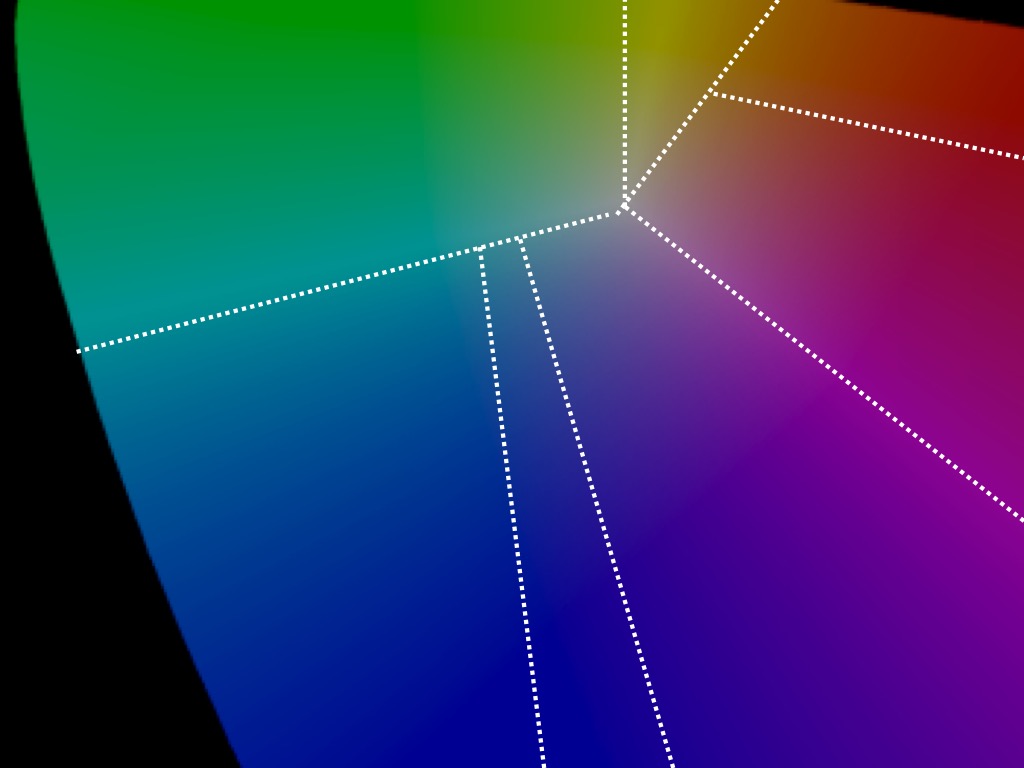
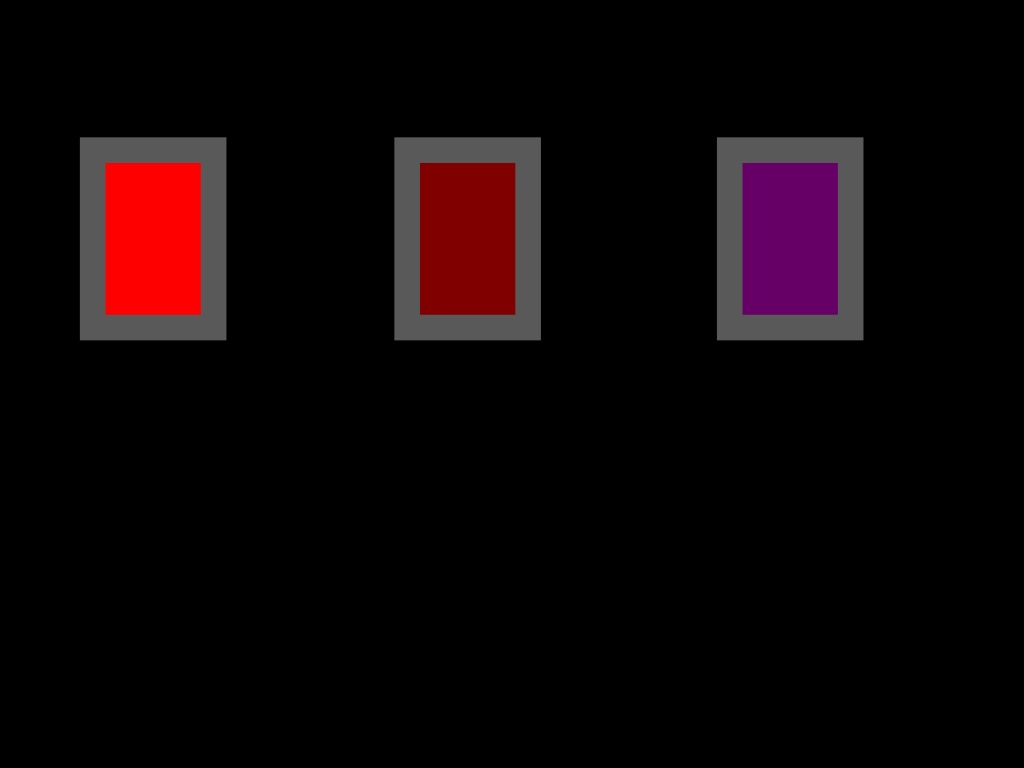
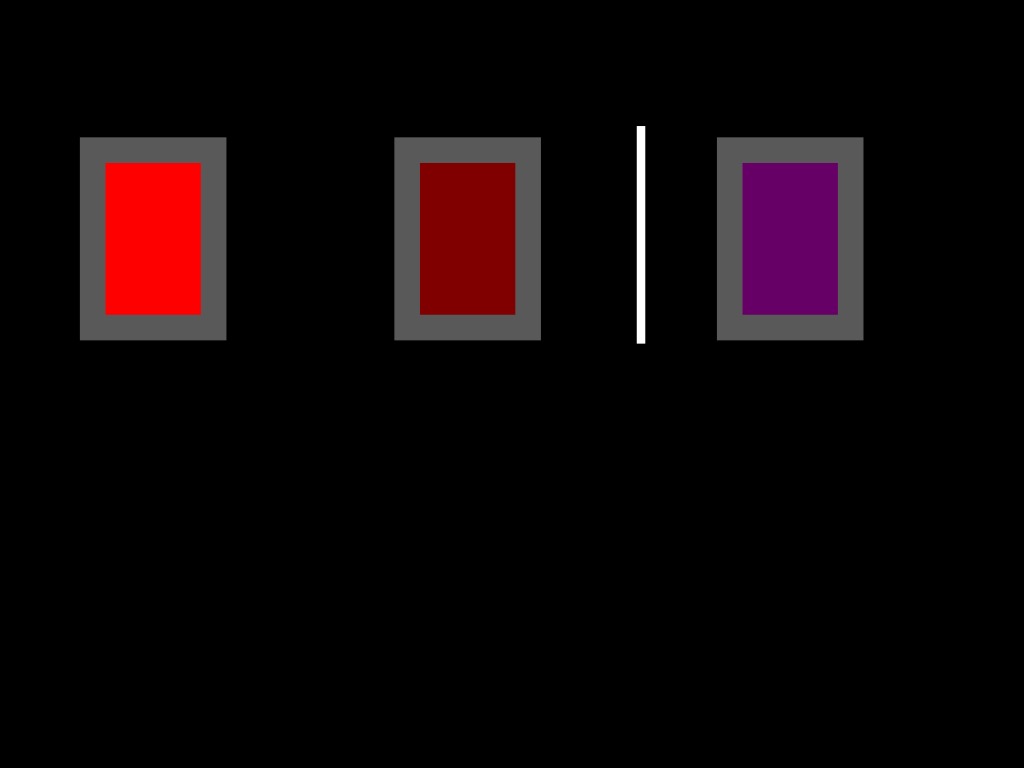
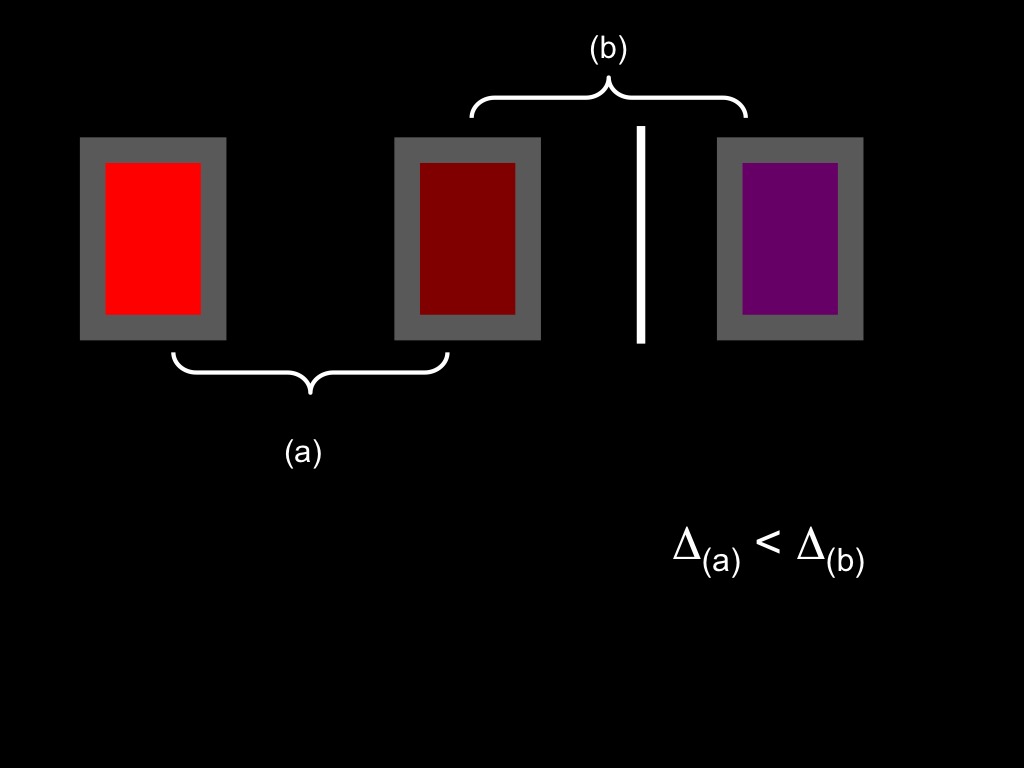
1. The second sequence of sensory encounters, (b), differ from each other more in phenomenal character than the first sequence of sensory encounters, (a), differ from each other.
2. This difference in differences in phenomenal character is a fact in need of explanation.
3. The difference cannot be fully explained by appeal only to perceptual experiences as of particular shades.
4. The difference can be explained in terms of perceptual experiences as of categorical colour properties.
5. There is no better explanation of the difference.

Hypothesis: Red things differ in visual appearance from non-red things.
Predictions:
1. Redness will influence discrimination.
2. Redness will influence similarity judgements.
3. Redness will influence pop-out effects.
4. Redness will influence perceptual grouping.
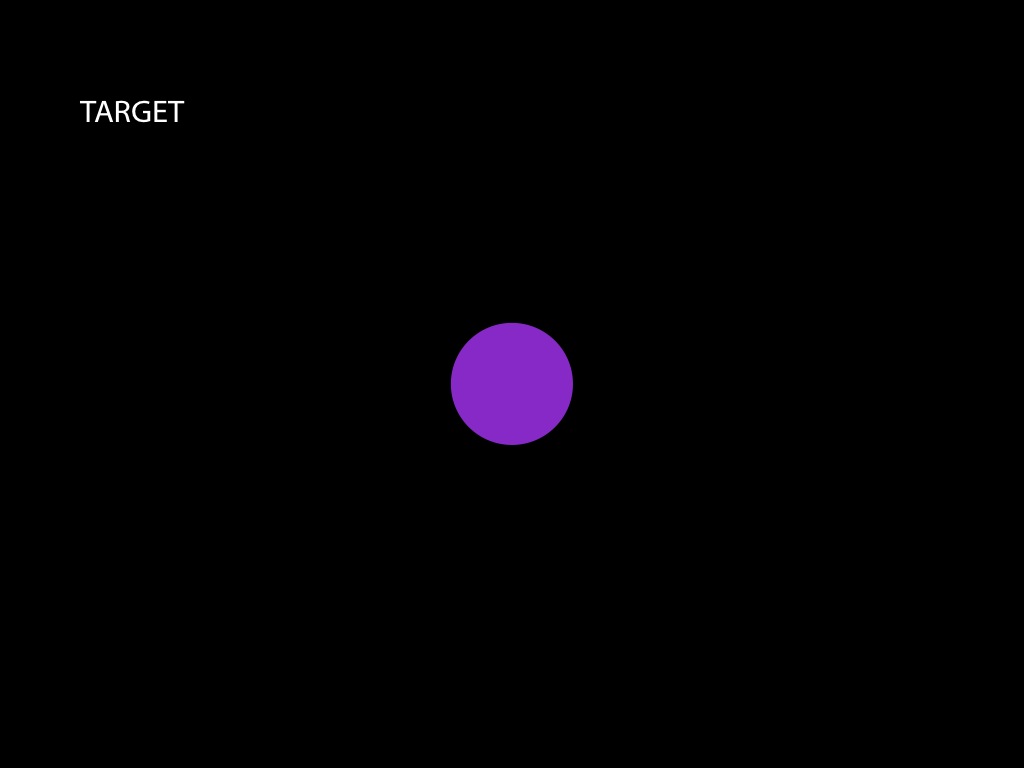
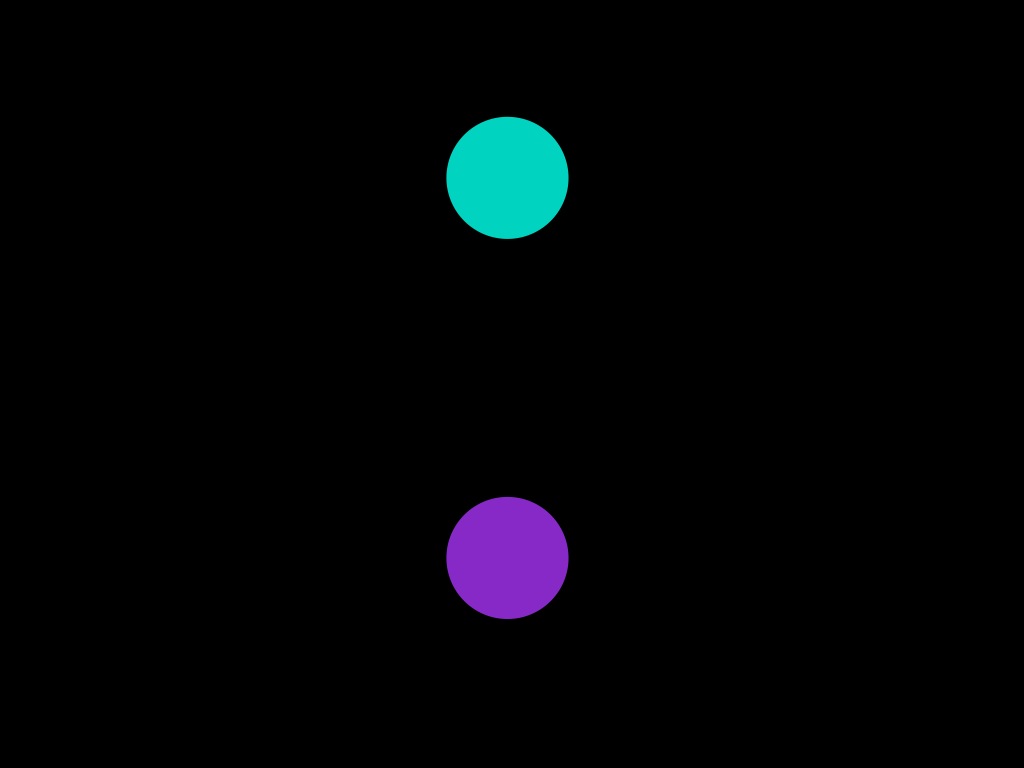
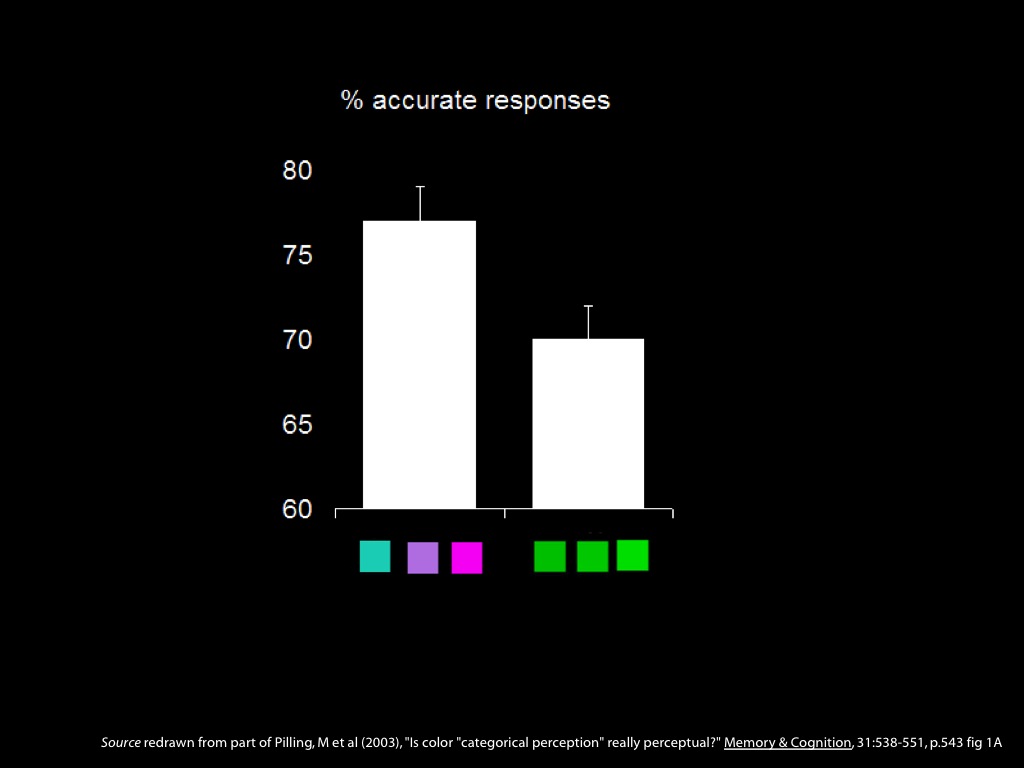
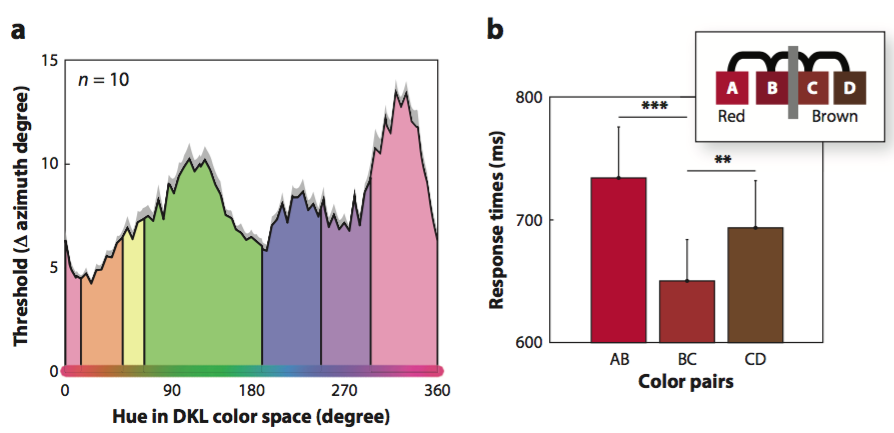
Witzel & Gegenfurtner 2018, figure 5
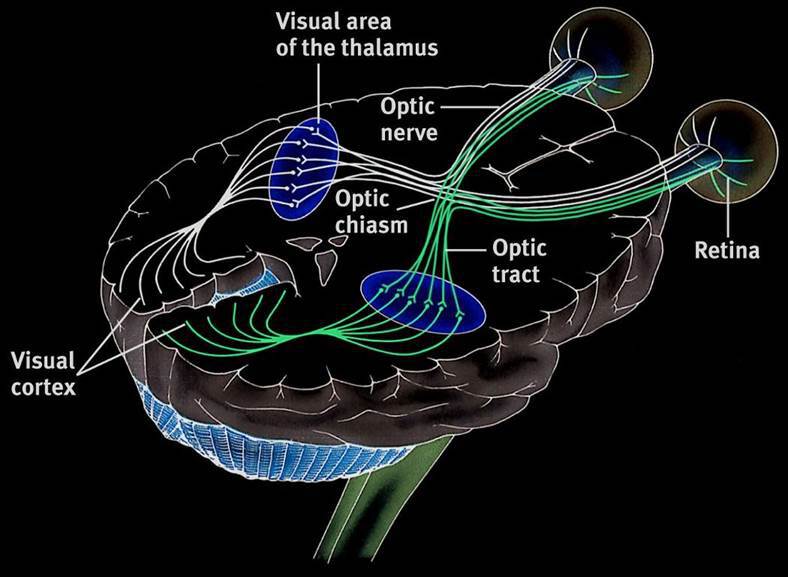

Hypothesis: Red things differ in visual appearance from non-red things.
Predictions:
1. Redness will influence discrimination.
2. Redness will influence similarity judgements.
3. Redness will influence pop-out effects.
4. Redness will influence perceptual grouping.
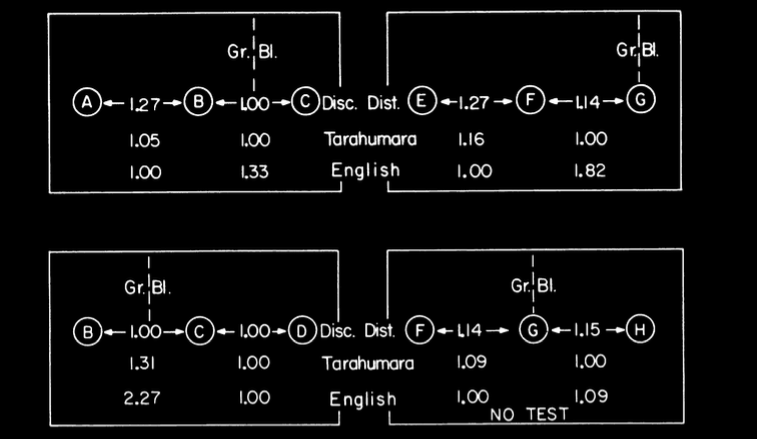
Kay & Kempton 1984, figure 3
Is the effect due to
visual appearances
or merely to
the ‘Name Strategy’?
Kay & Kempton (1984, Experiment 2)
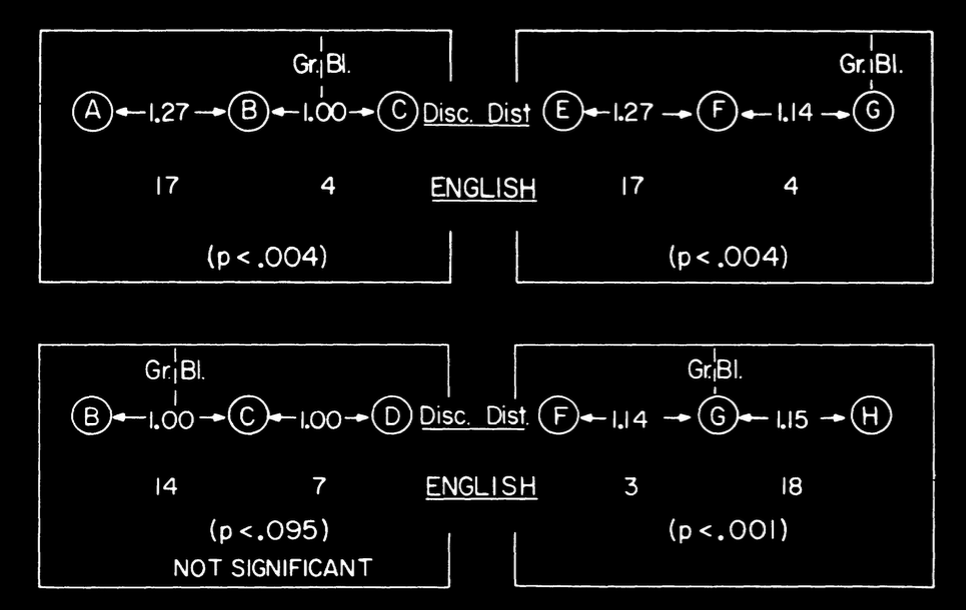
Kay & Kempton 1984, figure 4
conclusion: red things do not differ in visual appearance from non-red things
objection:
‘I’d like you to tell me which is bigger: the difference in greeness between the two chips on the left or the difference in blueness between the two chips on the right.’
Witzel & Gegenfurtner (2014)
++ discrimination and category boundary measurements for individual subjects
++ more categories tested (‘Rosa’, ‘Braun’, ‘Orange’, ‘Gelb’, ‘Gruen’, ‘Blau’, and ‘Lila’)
++ prototype effects found, but ‘there were literally no effects at boundaries’ (p.c.).

Hypothesis: Red things differ in visual appearance from non-red things.
Predictions:
1. Redness will influence discrimination.
2. Redness will influence similarity judgements.
3. Redness will influence pop-out effects.
4. Redness will influence perceptual grouping.
visual search task
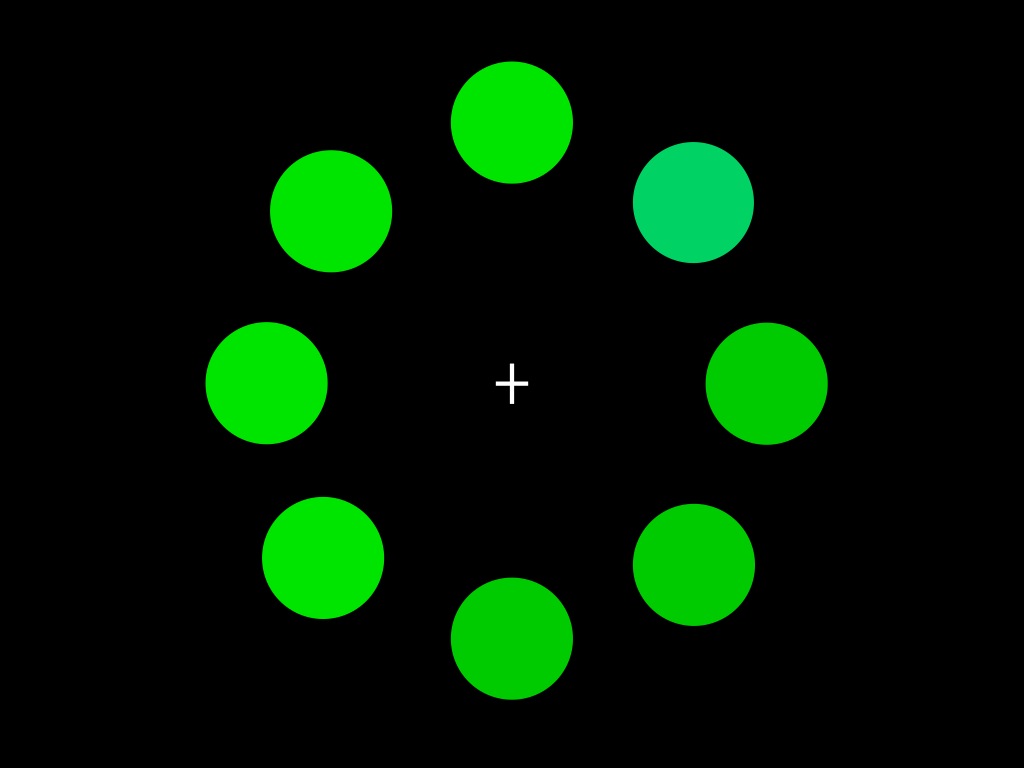
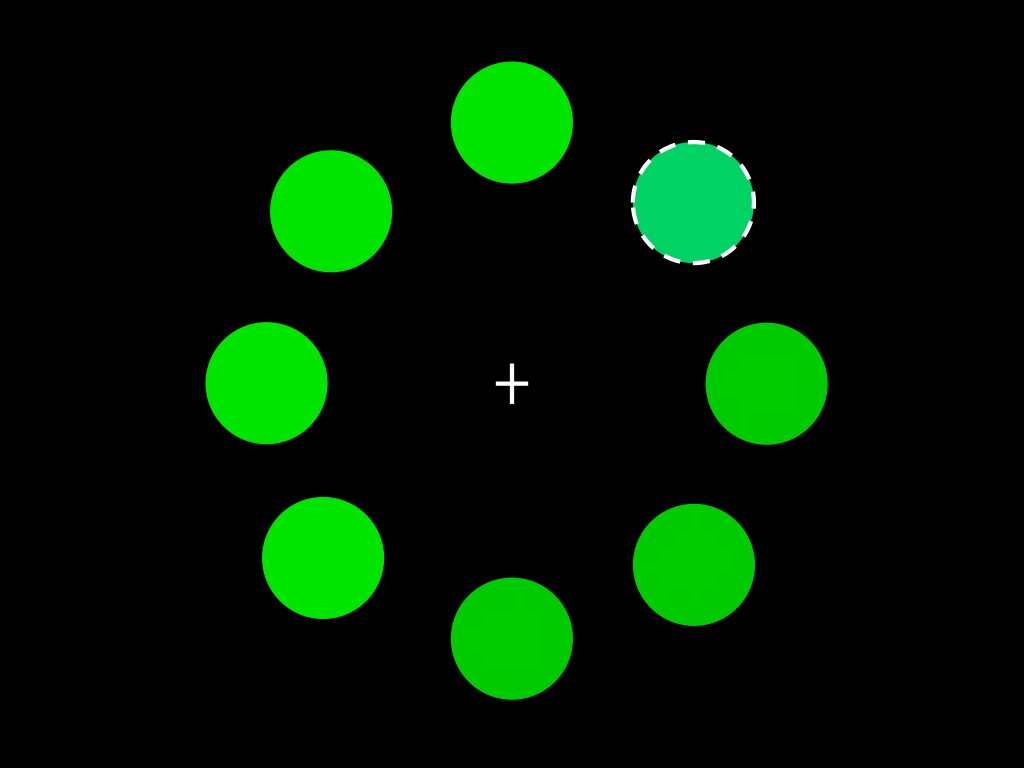
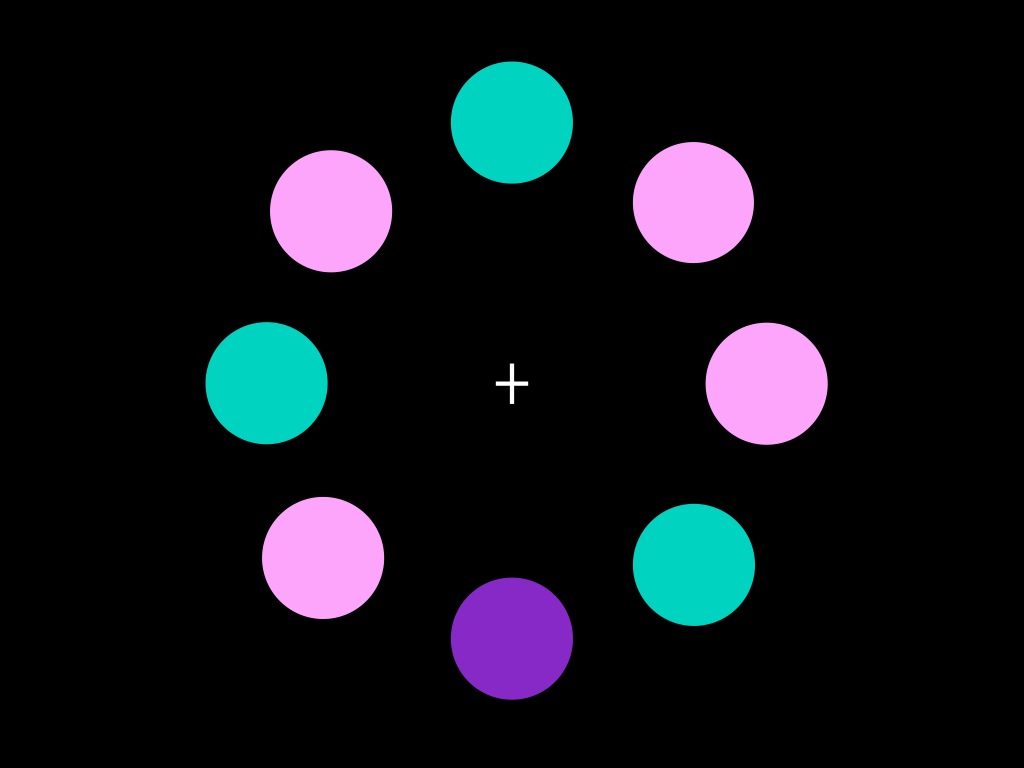
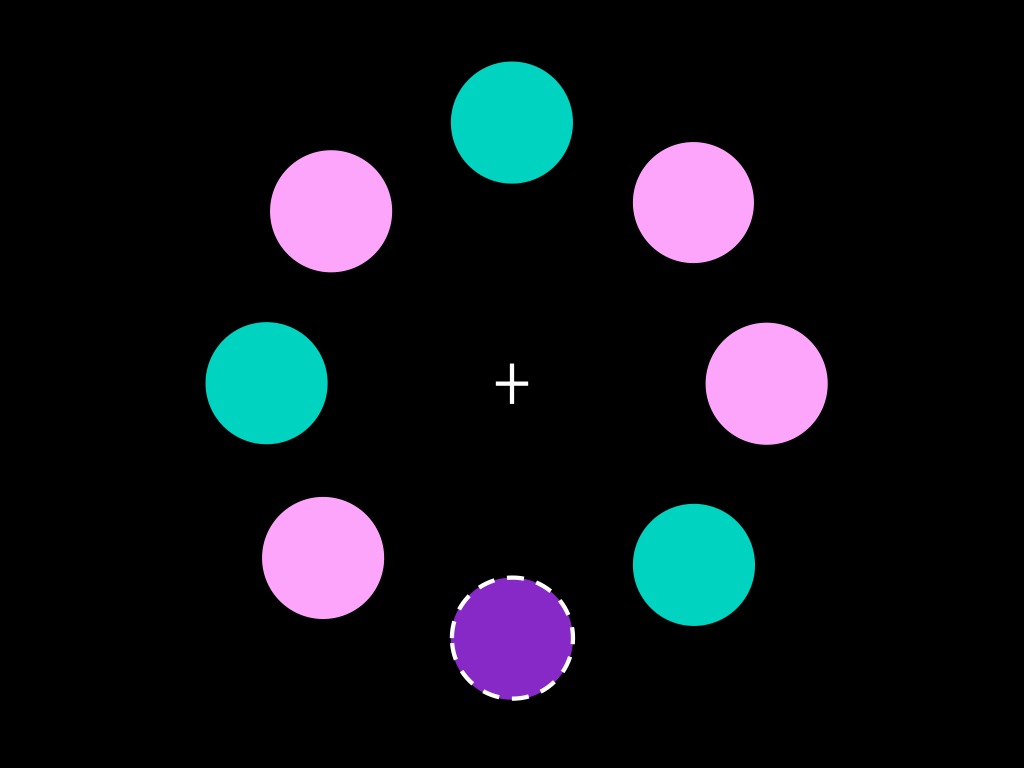
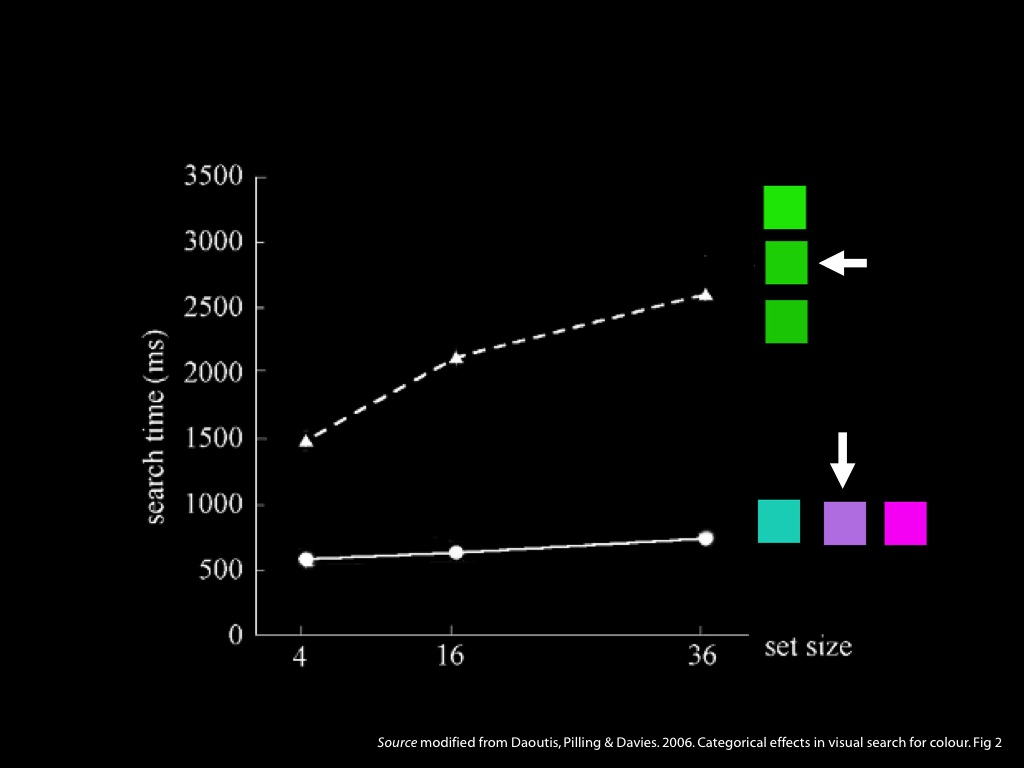

Hypothesis: Red things differ in visual appearance from non-red things.
Predictions:
1. Redness will influence discrimination.
2. Redness will influence similarity judgements.
3. Redness will influence pop-out effects.
4. Redness will influence perceptual grouping.

Webster & Kay 2012, figure 1
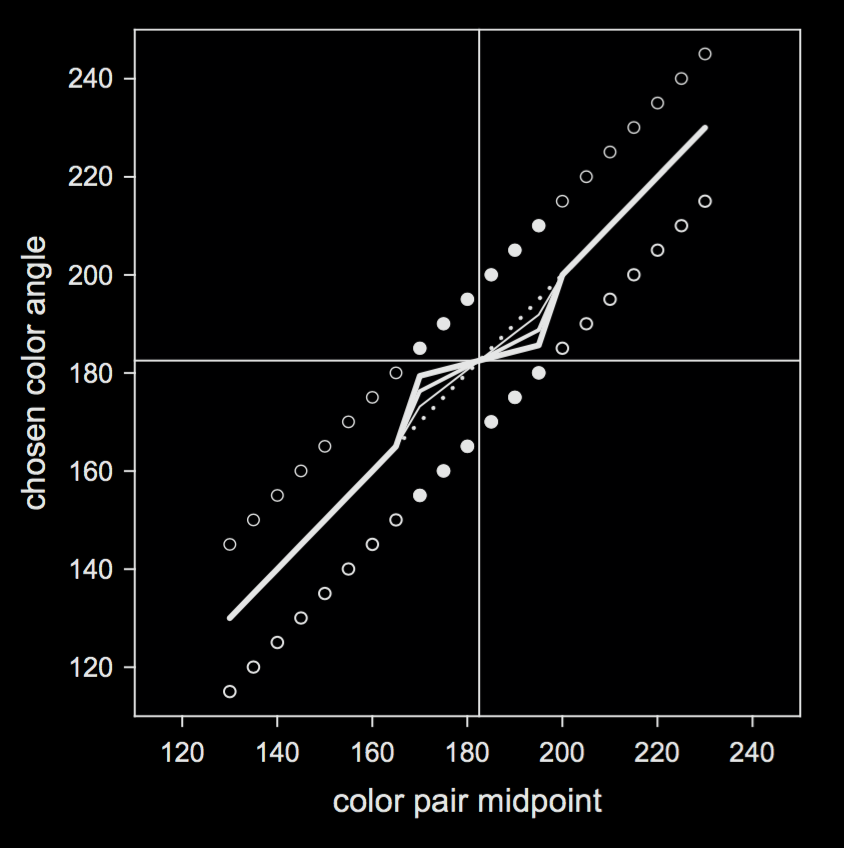
Webster & Kay 2002, figure 2

Hypothesis: Red things differ in visual appearance from non-red things.
Predictions:
1. Redness will influence discrimination.
2. Redness will influence similarity judgements.
3. Redness will influence pop-out effects.
4. Redness will influence perceptual grouping.

Do red things differ in visual appearance from non-red things?
As far as we know: No!